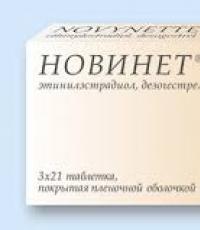Download ppt "Civil War" Presentation on the history of "civil war in Russia". Scattered performances - "local" character
slide 1
slide 2
 CIVIL WAR - armed struggle for state power of various social groups within the state
CIVIL WAR - armed struggle for state power of various social groups within the state
slide 3
 THE MAIN STAGES OF THE CIVIL WAR THE FORMATION OF THE WHITE MOVEMENT: IN THE KUBAN - THE VOLUNTEER ARMY OF GENERALS L.KORNILOV AND A.DENIKIN ON THE DON - THE DON COSSACK ARMY ATAMANOV A.KALEDINA AND P.KRASNOV BEHIND THE URALS - THE ARMY OF ADMIRAL A.KOLCHAK V ESTONIA-NORTHWESTERN ARMY GENERAL N.YUDENICH IN THE NORTH - GENERAL E.MILLER'S ARMY ELECTION OF A.KOLCHAK "SURE RULE OF RUSSIA" STAGE I - OCTOBER 1917 - SPRING 1918 "SOFT CIVIL WAR"
THE MAIN STAGES OF THE CIVIL WAR THE FORMATION OF THE WHITE MOVEMENT: IN THE KUBAN - THE VOLUNTEER ARMY OF GENERALS L.KORNILOV AND A.DENIKIN ON THE DON - THE DON COSSACK ARMY ATAMANOV A.KALEDINA AND P.KRASNOV BEHIND THE URALS - THE ARMY OF ADMIRAL A.KOLCHAK V ESTONIA-NORTHWESTERN ARMY GENERAL N.YUDENICH IN THE NORTH - GENERAL E.MILLER'S ARMY ELECTION OF A.KOLCHAK "SURE RULE OF RUSSIA" STAGE I - OCTOBER 1917 - SPRING 1918 "SOFT CIVIL WAR"
slide 4
 MAIN STAGES OF THE CIVIL WAR FORMATION OF THE RED ARMY: NOVEMBER 1917 - DECREE ON THE DEMOBILIZATION OF THE OLD ARMY JANUARY 1918 - DECREE ON THE CREATION OF THE WORKERS' AND PEASANTS' RED ARMY AND RED FLEET MARCH 1918 - DECRE ET ON THE MOBILIZATION OF THE OFFICERS OF THE OLD ARMY TO THE RED ARMY (35 THOUSAND PEOPLE) MAY 1918 - DECREE ON FORCED RECRUITMENT TO THE RED ARMY CREATION OF A REVOLUTIONARY COUNCIL HEADED BY L. TROTSKY STAGE I - OCTOBER 1917 - SPRING 1918 "SOFT CIVIL WAR"
MAIN STAGES OF THE CIVIL WAR FORMATION OF THE RED ARMY: NOVEMBER 1917 - DECREE ON THE DEMOBILIZATION OF THE OLD ARMY JANUARY 1918 - DECREE ON THE CREATION OF THE WORKERS' AND PEASANTS' RED ARMY AND RED FLEET MARCH 1918 - DECRE ET ON THE MOBILIZATION OF THE OFFICERS OF THE OLD ARMY TO THE RED ARMY (35 THOUSAND PEOPLE) MAY 1918 - DECREE ON FORCED RECRUITMENT TO THE RED ARMY CREATION OF A REVOLUTIONARY COUNCIL HEADED BY L. TROTSKY STAGE I - OCTOBER 1917 - SPRING 1918 "SOFT CIVIL WAR"
slide 5
 THE MAIN STAGES OF THE CIVIL WAR THE BEGINNING OF THE IMPERIALIST INTERVENTION OBJECTIVES: - TO FORCE RUSSIA TO RE-OPEN THE EASTERN FRONT OF THE FIRST WORLD WAR - TO RETURN THE FOREIGN PROPERTY NATIONALIZED BY THE BOLSHEVIK - TO PREVENT " EXPORT" OF BOLSHEVISM STAGE I - OCTOBER 1917 - SPRING 1918 "SOFT CIVIL WAR"
THE MAIN STAGES OF THE CIVIL WAR THE BEGINNING OF THE IMPERIALIST INTERVENTION OBJECTIVES: - TO FORCE RUSSIA TO RE-OPEN THE EASTERN FRONT OF THE FIRST WORLD WAR - TO RETURN THE FOREIGN PROPERTY NATIONALIZED BY THE BOLSHEVIK - TO PREVENT " EXPORT" OF BOLSHEVISM STAGE I - OCTOBER 1917 - SPRING 1918 "SOFT CIVIL WAR"
slide 6
 MAIN STAGES OF THE CIVIL WAR MAIN EVENTS: MAY 1918 - REBELLION OF THE CZECHOSLOVAK CORPS IN THE VOLGA REGION JUNE - ANTI-BOLSHEVIST REBELLIONS IN THE VOLGA REGION AND BEHIND THE URALS. CREATION OF THE COMMITTEE OF THE CONSTITUENT ASSEMBLY IN SAMARA, THE PROVISIONAL SIBERIAN GOVERNMENT IN OMSK, THE PROVISIONAL GOVERNMENT IN UFA, THE BEGINNING OF THE OFFENSIVE OF THE ARMY OF A. KORNILOV ON MOSCOW ON JUNE 13 - "THE FATHERLAND IS IN DANGER!" JULY 17 - THE SHOOTING OF THE ROYAL FAMILY IN YEKATERINBURG AUGUST - A.DENIKIN AND P. KRASNOV'S OFFENSIVE TO JOIN A.KORNILOV'S TROOPS SEPTEMBER 2 - "THE SOVIET REPUBLIC IS A SINGLE MILITARY CAMP!" OCTOBER - A. KOLCHAK'S ARMY IS RETURNED TO THE URAL II STAGE - SUMMER - AUTUMN 1918 THE BEGINNING OF THE FRONT STAGE OF THE CIVIL WAR
MAIN STAGES OF THE CIVIL WAR MAIN EVENTS: MAY 1918 - REBELLION OF THE CZECHOSLOVAK CORPS IN THE VOLGA REGION JUNE - ANTI-BOLSHEVIST REBELLIONS IN THE VOLGA REGION AND BEHIND THE URALS. CREATION OF THE COMMITTEE OF THE CONSTITUENT ASSEMBLY IN SAMARA, THE PROVISIONAL SIBERIAN GOVERNMENT IN OMSK, THE PROVISIONAL GOVERNMENT IN UFA, THE BEGINNING OF THE OFFENSIVE OF THE ARMY OF A. KORNILOV ON MOSCOW ON JUNE 13 - "THE FATHERLAND IS IN DANGER!" JULY 17 - THE SHOOTING OF THE ROYAL FAMILY IN YEKATERINBURG AUGUST - A.DENIKIN AND P. KRASNOV'S OFFENSIVE TO JOIN A.KORNILOV'S TROOPS SEPTEMBER 2 - "THE SOVIET REPUBLIC IS A SINGLE MILITARY CAMP!" OCTOBER - A. KOLCHAK'S ARMY IS RETURNED TO THE URAL II STAGE - SUMMER - AUTUMN 1918 THE BEGINNING OF THE FRONT STAGE OF THE CIVIL WAR
Slide 7
 THE MAIN STAGES OF THE CIVIL WAR MAIN EVENTS: NOVEMBER 1918 - LANDING OF THE ENTENTE TROOPS IN ODESSA, SEVASTOPOL AND BAKU DECEMBER - PROMOTION OF A.DENIKIN'S TROOPS STOPPED JANUARY 1919 - THE BEGINNING OF THE SOVIET-POLISH WAR FEB RAL - THE ARMY OF A.DENIKIN IS REJECTED BY S.BUDENNY FOR THE DON, THE OFFENSIVE OF THE ARMY OF N.YUDENICH ON PETROGRAD MARCH - THE OFFENSIVE OF A.KOLCHAK MAY - THE ARMY OF A.DENIKIN IS REJECTED BY THE ARMY OF N.SHCHORS TO THE CRIMEA III STAGE - NOVEMBER 1918 - SPRING 1919 "THE PERIOD OF PURE BELOGVAR-DEITS"
THE MAIN STAGES OF THE CIVIL WAR MAIN EVENTS: NOVEMBER 1918 - LANDING OF THE ENTENTE TROOPS IN ODESSA, SEVASTOPOL AND BAKU DECEMBER - PROMOTION OF A.DENIKIN'S TROOPS STOPPED JANUARY 1919 - THE BEGINNING OF THE SOVIET-POLISH WAR FEB RAL - THE ARMY OF A.DENIKIN IS REJECTED BY S.BUDENNY FOR THE DON, THE OFFENSIVE OF THE ARMY OF N.YUDENICH ON PETROGRAD MARCH - THE OFFENSIVE OF A.KOLCHAK MAY - THE ARMY OF A.DENIKIN IS REJECTED BY THE ARMY OF N.SHCHORS TO THE CRIMEA III STAGE - NOVEMBER 1918 - SPRING 1919 "THE PERIOD OF PURE BELOGVAR-DEITS"
Slide 8
 MAIN STAGES OF THE CIVIL WAR MAIN EVENTS: JULY 1919 - V.CHAPAEV'S OFFENSIVE ON A.KOLCHAK; A.DENIKIN'S OFFENSIVE ON MOSCOW OCTOBER - THE DESTRUCTION OF THE ARMY OF N.YUDENICH NEAR NAVA. THE WESTERN FRONT IS LIQUIDATED DECEMBER - A.DENIKIN'S OFFENSIVE IS STOPPED, THE RED ARMY'S COUNTEROFFENSIVE MARCH 1920 - A.KOLCHAK'S ARMY IS DESTROYED NEAR IRKUTSK. A.KOLCHAK IS SHOT. THE EASTERN FRONT IS LIQUIDATED APRIL - A.DENIKIN'S ARMY IS REJECTED TO THE CRIMEA. DENIKIN TRANSFERED THE COMMAND TO GENERAL P. WRANGEL AND EMIGATED JULY - P. WRANGEL'S OFFENSIVE ON VORONEZH OCTOBER - M. FRUNZE'S OFFENSIVE ON P. WRANGEL'S ARMY NOVEMBER - P. WRANGEL'S DESTRUCTION IN THE CRIMEA. THE SOUTHERN FRONT IS LIQUIDATED STAGE IV - SUMMER 1919 - AUTUMN 1920 Civil war in Russia
MAIN STAGES OF THE CIVIL WAR MAIN EVENTS: JULY 1919 - V.CHAPAEV'S OFFENSIVE ON A.KOLCHAK; A.DENIKIN'S OFFENSIVE ON MOSCOW OCTOBER - THE DESTRUCTION OF THE ARMY OF N.YUDENICH NEAR NAVA. THE WESTERN FRONT IS LIQUIDATED DECEMBER - A.DENIKIN'S OFFENSIVE IS STOPPED, THE RED ARMY'S COUNTEROFFENSIVE MARCH 1920 - A.KOLCHAK'S ARMY IS DESTROYED NEAR IRKUTSK. A.KOLCHAK IS SHOT. THE EASTERN FRONT IS LIQUIDATED APRIL - A.DENIKIN'S ARMY IS REJECTED TO THE CRIMEA. DENIKIN TRANSFERED THE COMMAND TO GENERAL P. WRANGEL AND EMIGATED JULY - P. WRANGEL'S OFFENSIVE ON VORONEZH OCTOBER - M. FRUNZE'S OFFENSIVE ON P. WRANGEL'S ARMY NOVEMBER - P. WRANGEL'S DESTRUCTION IN THE CRIMEA. THE SOUTHERN FRONT IS LIQUIDATED STAGE IV - SUMMER 1919 - AUTUMN 1920 Civil war in Russia (1917 - 1922)Civil War 1918-1920 is due to deep
social, political, economic, national
and other contradictions armed struggle for power between
various groups and strata of the population of the country, held
with the active intervention of foreign states and
including military operations by regular armies, uprisings,
rebellions, guerrilla and sabotage-terrorist actions
and other forms.
Intervention
armedintervention
foreign countries in
internal affairs of the country
Carried out by: USA, UK,
France, Japan Civil War
was a consequence
revolutions of 1917
Causes
civil
wars:
1. Aggravation of social contradictions in the Russian
society, the unwillingness of the autocracy to
significant reforms in the political and
economic structure.
2. The policy of the leading political parties (the Cadets,
Socialist-Revolutionaries, Mensheviks), failed to stabilize
situation after the overthrow of the autocracy.
3. Seizure of power by the Bolsheviks and the desire
the overthrown classes regain their dominance.
4. Intervention of foreign states in
internal affairs of Russia (intervention). Support
Entente countries of the White Guard troops and
governments largely determined the duration of this
war.
5. Mistakes and miscalculations of the Bolsheviks, the Soviet
government in matters of domestic policy (Split
villages in the summer of 1918, decossackization, politics
"war communism", etc.).
6. Violence was perceived as a universal method
solutions to many problems. Non-recognition by countries of a new form of political
authorities.
Causes
foreign
interventions:
Dissatisfaction with Russia's withdrawal from the First World War
Rejection of the Bolshevik slogan of world
revolution.
Protest against the nationalization of foreign
property and non-payment of debts.
-accompanied by intervention and terror;
Peculiarities
civil
wars in
Russia:
- did not have clear boundaries and warring groups;
- lack of time frames;
- characterized by class conflict
citizens, change of views, disintegration of family ties Civil War
covers the period from
October 1917 By
October 1922
Three main
stage
civil
wars
From seizing power
Bolsheviks in
Petrograd to completion
armed struggle in
Far East.
From October 1917 until the spring of 1918. - "soft" period
Civil War". The military operations were
mostly local in nature.
From the spring - summer of 1918 - "front-line stage"
Civil War.
1. Summer - autumn 1918 - period of escalation of the war
(introduction of food dictatorship,
organization of combos)
2. December 1918 - June 1919 - the period of confrontation
regular red and white armies. white movement
achieved the most success. Strengthening red and
white terror.
3. The second half of 1919 - autumn 1920 - period
military defeat of the white armies. Peasantry
bowed to the side of the Soviet government.
The third stage - the end of 1920-1922. - the period of "small
Civil War": mass peasant
uprisings, growing discontent of the workers, speech
Kronstadt sailors.
Reds: "The socialist fatherland is in danger!"
The backbone of this camp was the partyBolsheviks, which created a powerful vertical
structure and under the slogan of dictatorship
of the proletariat, which actually established its
dictatorship.
The social base of the Soviet camp
were: workers of the central industrial
district, a significant part of the peasantry, which in
in the end, largely predetermined the victory
red, part of the officer corps of the Russian
army (about 1/3 of its composition), small
bureaucracy.
January 15, 1918 by decree of the Council of People's Commissars
proclaimed the creation of the Workers 'and Peasants'
Red Army, and on January 29, 1918 was adopted
Decree on the organization of the Red Fleet.
"Red Leaders"
M.V. Frunze
Commander since 1919troops of a number of armies and
fronts.
In 1920-1924
commander of troops
Ukraine and Crimea,
Ukrainian military
county, along with
1922 Deputy Prev. SNK
Ukrainian SSR.
M.N. Tukhachevsky
From August 1921 Tukhachevsky M.N.headed the Military Academy of the Red Army,
commanded the troops of the Western and
Leningrad military districts. IN
1924 - 1925 took an active
participation in the implementation of technical
reconstruction of the Armed Forces,
developed development issues
operational art, military
construction, drafting military
encyclopedias. In 1935 he was the first
in the history of the Red Army
tactical exercise using
airborne assault, initiating
airborne troops. G.K.
Zhukov assessed him like this: "Giant
military thought, the star of the first
values in the galaxy of our military
Motherland".
V.I. Chapaev
Legendaryred commander.
From 1918 commanded
detachment, brigade and
25th Infantry
division
who played
significant role in
the defeat of the troops
A. V. Kolchak in the summer
1919. Killed in action.
Politics of war communism
Bolshevik policy,aimed at
construction
socialist society
emergency methods.
The main features of "war communism"
Nationalization of industrialenterprises
Overcentralization of management
industry
Food dictatorship and introduction
surplus appropriations
General labor service
Naturalization of economic relations
White: "For a united and indivisible Russia!"
Usually under this concept they combinethe entire camp of the counter-revolution, which spoke
against the reds. anti-soviet camp
were: deprived of power and property
landowners and bourgeoisie, Cossacks - about 4.5
million people, part of the officer corps of the Russian
army (about 40%), clergy, significant
part of the intelligentsia; here you can include
top political parties (Socialist-Revolutionaries and in
a lesser degree of Mensheviks).
The white camp was
heterogeneous. It included
monarchists and liberals,
supporters of the Constituent
assembly and open military
dictatorships, supporters
pro-German and
pro-Entente orientation,
people of ideas and people without
certain political
beliefs.
"White Generals"
L.G. Kornilov
firstcommanding
Volunteer
White Army.
A.V. Kolchak
Alexander Vasilyevich Kolchak (4November 1874 - February 7, 1920) -
Russian politician,
Vice Admiral of the Russian
Imperial Navy (1916) and
Admiral of the Siberian Flotilla
(1918). polar explorer and
oceanographer, participant
expeditions of 1900-1903
(awarded by the Imperial Russian
geographical society
Big Konstantinovskaya
medal). Member of the Russo-Japanese, World War I and
Civil wars. Chief and
leader of the White movement
Siberia.
A.I. Denikin
E.K. Miller
N.N. Yudenich
P.N. Wrangel
A.M. Kaledin
Civil War weapons
Civil War weapons
Civil War weapons
Mutiny of the Czechoslovak Corps
In Russia during World War I1914-18 from prisoners of war of the Austro-Hungarian army and Russian subjects
Czech nationality were
Czechoslovak units formed;
two rifle divisions were brought together
to the Czechoslovak Corps, which
stationed in Ukraine.
March 26, 1918 Soviet
the government has decided to
evacuation of Czechoslovak troops through
Vladivostok subject to delivery
the main part of the armament by local
Soviets. However, at a meeting in
Chelyabinsk May 14 command
corps, representatives of the Entente and
right SRs, it was decided to raise
rebellion.
On May 25, the rebellion began in
Mariinsk, together with the SR White Guard detachments
Czechoslovak troops captured a number of
cities where the gold reserves were located
Republic.
Soldiers of the 5th Regiment of the Czechoslovak Corps
at the station they seized in Penza.
May 1918
Czechoslovak Corps in Vladivostok.
Late May - November 1918
In 1918 formedthe main centers of the anti-Bolshevik
movement. So, in February 1918 in
Moscow and Petrograd arose "Union
revival of Russia", which united
Cadets, Mensheviks and Socialist-Revolutionaries. In March
the same year, the "Union for the Protection
Motherland and Freedom" under the direction of
B.V. Savinkov. Strong
anti-bolshevik movement
unfolded among the Cossacks. on the Don and
Kuban began to take shape
officer Volunteer Army,
which became the basis of the white movement.
After the death of L.G. Kornilov (April 13
1918) General took command
A.I. Denikin.
In the spring of 1918 began
foreign intervention. Germanic
troops occupied Ukraine, Crimea,
part of the North Caucasus. Romania
captured Bessarabia. Entente countries
signed a non-recognition agreement
Brest peace and future division
Russia.
General A.I. Denikin and his
Volunteer army.
November 1918 - April 1919
At the end of 1918 - beginning of 1919.the white movement reached
the highest range. in Siberia in
November 1918 came to power
Admiral A.V. Kolchak, announced
"Supreme Ruler of Russia".
In the Kuban and the North Caucasus, A.I.
Denikin united the Don and
Volunteer army in
Armed Forces of the South of Russia. On
north with the help of the Entente General
E.K. Miller formed his
army. General in the Baltics
N.N. Yudenich was preparing to march on
Petrograd. In November 1918
A.V. Kolchak launched an offensive in
Urals. December 15 troops
A.V. Kolchak was taken by the city of Perm, but
already December 31 offensive
Kolchak was suspended
Red Army. Front in the East
temporarily stabilized.
Admiral Kolchak: "Uniform
english, shoulder strap
Russian, Japanese tobacco,
ruler of Omsk"
National emblem,
used in
A. V. Kolchak
Admiral Kolchak bypasses the fighters
Spring 1919 – April 1920
First Cavalry Army of S.M. BudyonnyThe most difficult and decisive in the course
civil war was 1919.
Soviet Russia was not peaceful
borders. She was in total
enemy environment.
In March 1919 well
armed 300 thousand. army A.V.
Kolchak started powerful
attack from the East
connect with the troops of A.I.
Denikin and start a joint
attack on Moscow. Kolchakites
captured the city of Ufa and began to break through
to Simbirsk, Samara, Votkinsk.
Eastern front again
becomes the main one.
At the end of April, the troops of the Red
armies under command
S.S. Kamenev and M.V. Frunze
went on the offensive, stopped
Kolchak, and by the summer they were pushed back into
Siberia. By the beginning of 1920 Kolchak
were completely shattered, and
admiral arrested. In February 1920
by the verdict of the Irkutsk Revolutionary Committee
Admiral A.V. Kolchak was shot. The civil war led to huge material and
human losses. The total damage amounted to 50 billion rubles.
gold rubles, and human sacrifices are estimated today at
13-16 million people
The losses of the Red Army in battles amounted to 939,755 people.
about the same amount was the combat losses of her opponents.
The rest perished from starvation and war-related epidemics.
Results
civil
wars
About 2 million people emigrated from Russia. If we take into account
decrease in population growth during the war years, i.e. count
unborn Russians, the amount of loss can be estimated
about 25 million people.
As a result of the victory in the civil war, the Bolsheviks managed to
preserve statehood, sovereignty and territorial
integrity of Russia
The victory of the Bolsheviks in the civil war led to
curtailment of democracy, the dominance of a one-party system,
when the Party ruled on behalf of the people, on behalf of the Central Committee Party,
The Politburo and in fact the General Secretary or his entourage. . industrial production decreased by 7 times
coal and oil production was at the level of the end of the XIX century
Results
civil
wars
crop areas were sharply reduced; gross output
agriculture was 67% of the pre-war level
The people were exhausted. Not enough clothes, shoes,
medicines; Child homelessness has risen sharply.
transportation was in complete decline. During the Civil War, the struggle was for the ways of further development
countries.
The first is the preservation of Soviet power and its extension to the entire
territory of the former Russian Empire, the suppression of all forces that disagree with
policy of the Bolshevik leadership. This path meant the creation
a socialist state, a state of the dictatorship of the proletariat.
The second way is an attempt to preserve the bourgeois-democratic
republics and the continuation of the policy that was declared
by the Provisional Government and the Soviets in the spring and summer of 1917: further
development of democracy, free enterprise. For this path to
mainly the parties of "revolutionary democracy", participants
Provisional Government and Soviets - Mensheviks, Socialist-Revolutionaries (from autumn - right
Socialist-Revolutionaries), the left wing of the Cadets.
The third way met the interests of the big bourgeoisie, the nobility, the supreme
leadership of the tsarist army and meant an attempt to maintain a limited
monarchy and Russia as a “one and indivisible” country, faithful to the “allied
obligations."
Materials for lessons on the topic of the Civil War are designed for students in grade 9. It is supposed to work in three combined lessons in the classroom, do independent homework with subsequent verification. The work in the lessons is accompanied by a slide show with the teacher's comments. The presentation provides an opportunity for visual perception of events, personalization of the material (photos of historical figures with brief biographical information), penetration into the emotional atmosphere of that era (analysis of posters, listening to songs), allows you to better understand and better remember the historical event.
Purpose: To acquaint students with the events of the civil war
Teaching and educational tasks:
- To give an idea of the civil war as an alternative to the development of Russia; highlight the main reasons; introduce periodization and major events; find out the reasons for the defeat of the "whites" and the victory of the "reds", the results and consequences of the Civil War.
- To develop the skills and abilities of working with the text of the textbook, with a comparative historical table, establishing cause-and-effect relationships.
- To cultivate respect for controversial events in the history of the country, sympathy for people.
Type of lessons: combined (learning new knowledge, developing skills and abilities, independent work of students with subsequent verification).
Technological map of lessons.
| course of lessons | comments | concepts | slide number | time (min.) |
| Lesson #1 | ||||
| 1 goal setting | the task is to get acquainted with the events, analyze them, develop their own opinion on what was happening in Russia; | 2 | ||
| 2. the main causes of the Civil War | bring students to the conclusion that the Civil War is the only remaining alternative to the development of the country; | Civil War, democratic alternative; |
1 | 5 |
| 3 characteristics of the opposing forces | characterize the opposing forces in terms of social and party composition; | Whites, reds, greens, democratic counter-revolution; | 2 | 10 |
| 4. Characteristics of the intervention of foreign states in Russia | reasons, participants, results of the intervention; | intervention | 3 | 5 |
| 5. characteristics of the white movement, its leaders | events associated with the formation of the white movement, interesting biographical information of individual representatives of the white movement; | 5 | 10 | |
| 6. the formation of the Red Army, the characteristics of its leaders | stages of the formation of the Red Army, development of concepts, interesting biographical information of individual representatives of the Red Army; (Annex 1) | Red Army, compulsory military service, military experts, commissars, RVS, Defense Council; | 10 | 10 |
| 7 explanation | filling out table number 1 on your own | 3 | ||
| Lesson #2 | ||||
| 8 periodization of events | D/Z check: frontal survey; | 17 | 15 | |
| 9 posters | pay attention to the ideas of artists, the artistic image they created; | 24 | 5 | |
| 10 songs from the Civil War | pay attention to the emotions conveyed by poets and composers | 5 | ||
| 11 red and white terror | presentation of facts, their assessment by students | terror | 28 | 5 |
| 12 economic policy of whites and reds | work with the textbook on tables No. 2 and No. 3, work with concepts; |
“war communism”, surplus appropriation, universal labor service, egalitarian distribution, cards; | 31 | 14 |
| 13 explanation | filling in tables No. 2 and No. 3, learning concepts and their definitions, basic facts; | 1 | ||
| Lesson #3 | ||||
| 14 checking the knowledge of students | in the form of a conceptual dictation or independent work; | 20 | ||
| 15 End of the Civil War | characteristics of the Little Civil War | Antonovshchina | 35 | 8 |
| 16 reasons why whites lost and reds won | identification of root causes | 36 | 8 | |
| 17 Aftermath of the Civil War | highlight the consequences of the Civil War, focusing on human losses, their assessment by students; | 38 | 8 | |
| 18 D/Z explanation |
preparation for final work | 1 | ||
Table No. 1 The main events of the period of the Civil War
Table #2 “War Communism”
Table No. 3 Solution of the main issues by "white" governments.
| Issues to be resolved | Ufa directory A.Kolchak | Government of the South of Russia A. Denikin | Government of the North of Russia | Reformatory activity of P. Wrangel |
| political structure | ||||
| nation-state structure | ||||
| solution of the agricultural problem | ||||
| work issue resolution |
Main fronts of the Civil War
Oriental
Kolchak
Northwestern
Southern
Yudenich
KornilovDenikin
Wrangel
Northern
Miller

Major events of the Civil War
Stage 1 (October - May 1917)
- Gene. Kaledin, to Kazakh general P.N. Krasnov - Don,
- chieftain A.I.Dutov - Ural
- end of 1917 - a powerful center of counter-revolution arose in the south:
Volunteer army on the Don(supreme leader - A. V. Alekseev, commander-in-chief L. G. Kornilov, after his death A. I. Denikin).
IN March-April 1918 . there was a landing of units of the British (in Murmansk), American and Japanese (in the Far East)

March-April 1918
England
Japan,


Stage 2 (May-November 1918)
May 1918 - uprising of the Czechoslovak corps
Outcome : the overthrow of Soviet power in the Volga region, in the Urals, in Siberia

August 1918
England France
England

Anti-Bolshevik governments established in the summer of 1918 in the territories liberated by the Czechoslovaks
Committee of members of the Constituent Assembly (Komuch) - Samara.
Ural Regional Government - Ekaterinburg.
Provisional Siberian Government - Tomsk.
Ufa directory
Common goals : the convocation of the Constituent Assembly, the restoration of the political rights of citizens, the rejection of a one-party dictatorship and strict state regulation of the economic activities of peasants, etc.
Events : cancellation of Soviet decrees, return of nationalized property, mobilization into the army
November 18, 1918 - coup in Omsk, the liquidation of all governments in Siberia and the establishment of Kolchak's dictatorship ( Supreme ruler) on the territory of Siberia, the Urals, the Orenburg province.

Stage 3 (November 1918-Spring 1919)
- Military-dictatorial regimes became the leading force in the fight against the Bolsheviks.
- Mass intervention
What events connected with the beginning of the mass intervention in Soviet Russia?

November 1918
The number of interventionists by the beginning of 1919
South - 130 thousand people.
North - 20 thousand people.
Siberia, Far East - 150 thousand people
England
France

Autumn 1918 - the counteroffensive of the spacecraft on the eastern front (liberation from the White Guards of the middle Volga and Kama regions. The spacecraft on the eastern front was commanded by Vatsetis)

- Combined offensive of the Whites
March 1919 - Kolchak's offensive on the Eastern Front in order to connect with Denikin for a joint campaign against Moscow (repelled his offensive Kamenev, Frunze)
May 1919 - Yudenich's attack on Petrograd

Summer 1919 - the main southern front (room Egorov)
Summer 1919 – Peasant war in the south (N. Makhno)
October 1919 - Denikin's troops were thrown back in the Black Sea region (command of the forces of the south of Russia passed to General Wrangel)
November 1919 - Yudenich's troops were pushed back to Estonia
December 1919 - the defeat of Kolchak's armies in Siberia

1. Indicate the name of the commander-in-chief of the White Guard troops that reached the line indicated on the diagram by the number "2".
2. Write the missing word: "The events indicated in the diagram took place in the year one thousand nine hundred _______."
3. Indicate the name of the city indicated by the number "1" and which was the target of the campaign of the White Guard troops, whose actions are shown in the diagram.

4. What judgments related to the events indicated in the diagram are correct? Choose three sentences from the six offered. write down
in the table the numbers under which they are indicated.
1) The Commander-in-Chief of the White Army, whose actions are indicated on the diagram, had the title of Supreme Ruler of Russia.
2) In the course of subsequent events that occurred immediately after those indicated on the diagram, the Whites managed to capture the city of Tula.
3) Significant damage to the rear of the White Guard troops, whose actions are indicated in the diagram, was inflicted by the army of N.P. Makhno.
4) After the defeat of the White Guard troops, whose actions are indicated in the diagram, their commander emigrated from Russia.
5) During the period of events indicated in the diagram, the Bolsheviks pursued a new economic policy.
6) The White Guard army, whose actions are indicated in the diagram, received weapons and ammunition from the Entente countries.

Stage 5 (May-November 1920)
1920-1921 - Soviet-Polish war
(KA was commanded by M. Tukhachevsky)
Results : a significant part of the territory
Ukraine and Belarus went to Poland.
November 1920 - defeat of the armed forces
South of Russia Wrangel, liberation of spacecraft
(troops under commander Frunze)

1922 - the end of the civil struggle in the Far East
April 1920 - the formation of the FER (buffer state on the territory of Transbaikalia in order to prevent a war between the RSFSR and Japan)
February 1922 – liberation of spacecraft Blagoveshchensk, Khabarovsk
October 1922 – liberation of Vladivostok (evacuation of Japanese troops)
November 1922 - the reunification of the Far Eastern Republic with the RSFSR

The offensive of the Red Army on the Eastern Front in the summer of 1919 was directed against the troops
1) Admiral A.V. Kolchak
2) General A.I. Denikin
3) General P.N. Wpangel
4) General N.N. Yudenich




